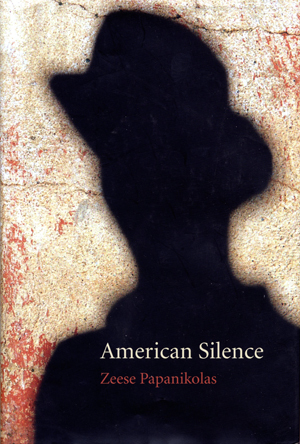From the Reviews

With American Silence, Zeese Papanikolas creates his own work of art, a textual montage of media by writer Henry Adams, painter Jackson Pollock, and photographer E. J. Bellocq, as well as work by other Americans whose legacies and lives Papanikolas insists belie the mythology of the American dream. Carefully mapped and beautifully crafted, Papanikolas’s latest work exposes the hollow core of the American identity, pounded on possibilities generated by the imagination. R. L. Streng, Western American Literature
In addressing the “emptiness” of the American soul following the destructive taking of the West, Papanikolas finds a common theme: “a kind of longing, a sense of something lost… and possibly irretrievable.” American Silence is imaginatively-written, no-holds-barred historical biography. Its goal is to expose gaping fault lines in writers, artists, musicians and the nation itself. Richard V. Francaviglia, The Western Historical Quarterly
American Silence is an original history book. From the historian’s point of view the period covered in the book starts with the Lewis and Clark expedition and ends with glimpses of the decade following World War II. From the creative writer’s point of view, the book tells a different history, the one where the canvas of Bingham’s Fur Traders Descending the Missouri extends into Dorothea Lange’s The Road West – U.S. 54 in New Mexico. American Silence fills up the “unpainted…absence” of the masculine landscape with the “no there there” of the feminine inner wilderness at a point where “everything [becomes] conjecture” and collapses into silence.
Papanikolas uses his pen like a camera. This is not a book in any common sense of the term, but a carefully scripted docudrama: the elements of mise-en-scène, the process of editing and camera work, the cast, the voice-over and even the sound track are all there. As it stands, the book is ready to become a film.Hager Weslati, Journal of American Studies
From the Book:
In grade schools kids were ducking and covering, and fallout from Nevada was blowing downwind like invisible snow. White southern boys as poor as Hiram Williams had been were assimilating the rhythms of the juke joints and bars of black America and soon one of them named Elvis Presley would be traveling the country circuit. When the singer Ira Louvin called him a “white nigger” playing “nigger trash” it was clear some cultural line had been crossed, but it remained to be seen if the Elvises and Buddys and Jerry Lees had brought a racial and erotic revolution to their world or were simply adding their mite to that postwar creation of tics and needs, the American teenager. Korea was scattering a blizzard of white crosses over the landscape of America. Just around the corner, off the coast of Cuba, the United States and the Soviet Union would soon push themselves to the brink of nuclear war and around the corner from that was Vietnam.
Still, on jukeboxes and record players Hank was dishing out that jambalaya and carrying on about some coldhearted woman. He was still driving off in that hot rod Ford to that place that was always right over the hill. Or the next hill. Or the next. And we were going with him to that place, the place where everything would be all right. Where everything would be easy and good. But somehow we never got there. It was shit-kicker music.
The wilderness still lived in the best of our songs, but it was no longer a wilderness of trees and prairies and great rivers, but that internal wilderness whose silence and sense of loss had been there even from the first. The utopian future, the empty slate in the imaginations of generations of pioneers, was gone like the lands of the Indians: the place right over the hill was in fact a place in a mythical past, a nostalgia for somewhere that had never been. By 1979 country singer Larry Gatlin was telling a new generation of Okies and Arkies and Alabama boys who might have been dreaming of the big move west that all the gold in California was locked up in a Beverly Hills vault in somebody else’s name.
Available at University of Nebraska Press, at Powells.com, and at Indiebound.org.